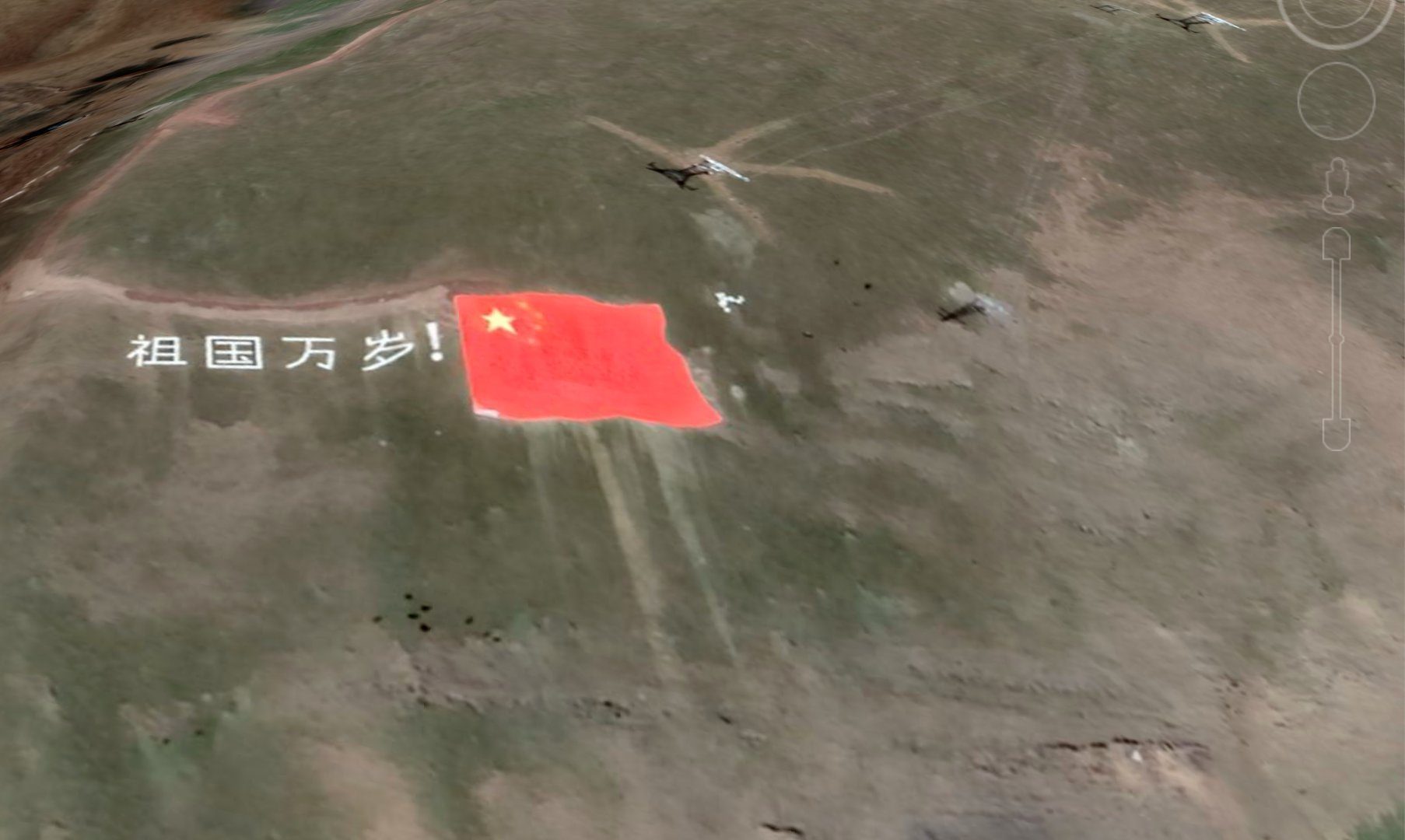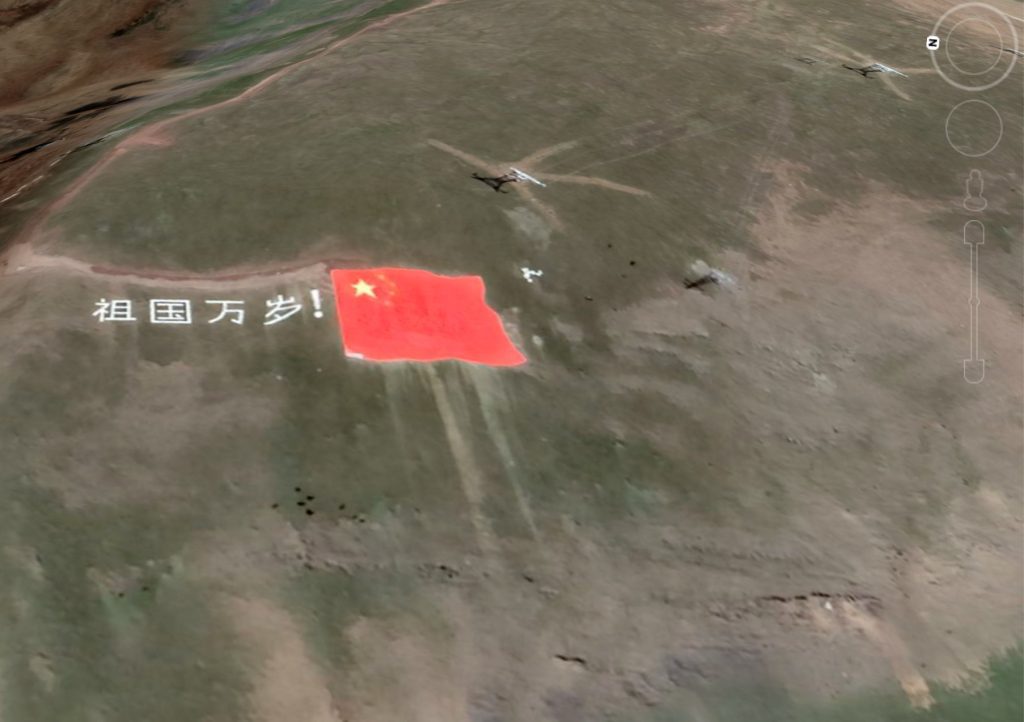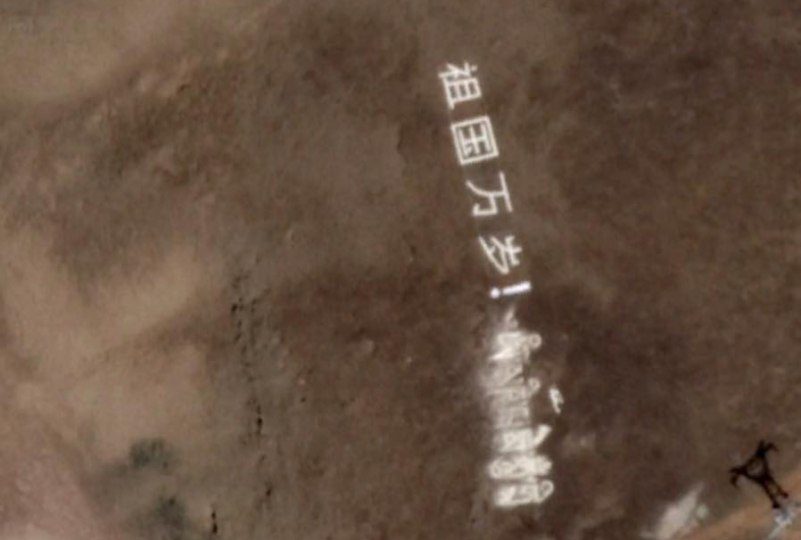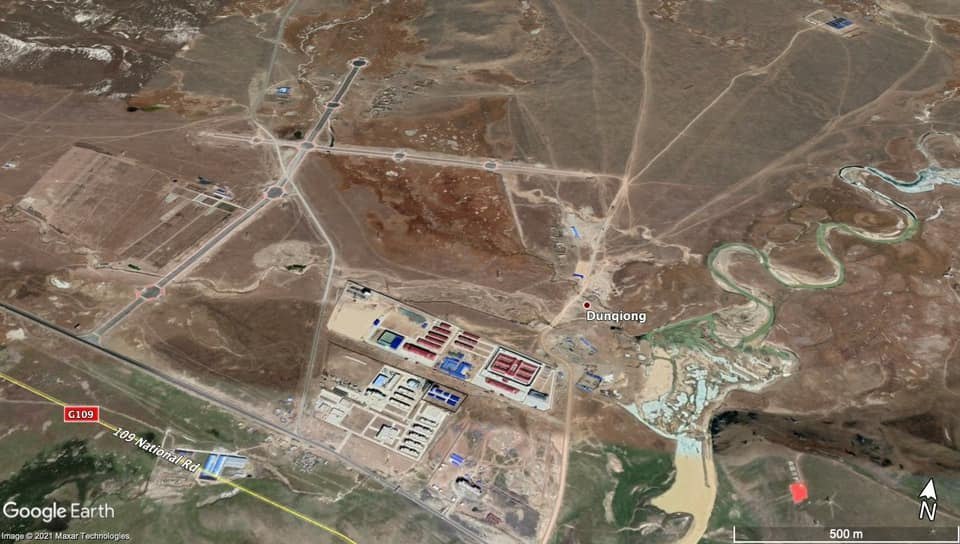
Tibetan Mantra Replaced With Chinese Flag
Further evidence of Tibetan culture being erased has surfaced in Central Tibet
Satellite imagery from Nagchu in Central Tibet has revealed that the Chinese Flag has replaced the Tibetan mantra Om Mani Padme Hum, which is the most ubiquitous mantra chanted by Tibetan Buddhists. It is also seen carved into rocks and cairns on sacred hills. The first image of the mantra was seen in March 2020, and the Chinese flag appears to have scrubbed it off around August 2020.

“Long live the motherland” / Chinese National Flag. (Photo: Google Earth)
The Dalai Lama explains the meaning of Om Mani Padme Hum as our body, speech, and mind becoming purified from suffering through the combined method of developing compassion, and the wisdom of the inherent, empty nature of all things.
The inscription of the Tibetan mantra is likely an expression of the sacredness of the area and a call to respect Tibet’s environment against the construction of the nearby airport of Nagchu Dagring.
The construction of the airport was delayed in 2015 due to the lack of technological expertise in safety standards. The airport is at an altitude of 4,436 meters above sea level and therefore presents a number of operational risks in aircraft performance. If completed, it will be the world’s highest airport.

Image of the Tibetan mantra scrubbed out and replaced by “Long live the Motherland” in Chinese (Photo: Google Earth)
The meticulous efforts to sinicise Tibet’s landscape and everything Tibetan reflects in the ongoing forced relocation of Tibetan nomads, political re-education campaigns in monasteries, and language rights abuses. On 28 January, Tashi Wangchuk was released after completing a five-year sentence for speaking to New York Times about his efforts to keep the Tibetan language alive.
Despite China’s relentless and repetitive claims of granting religious freedom and “minority” rights in the territory of the People’s Republic of China, Tibetan history, language, and religion are increasingly facing the threat of extinction.

The image of the Chinese flag in relation to Nagchu Dagring Airport. (Photo: Google Earth)

